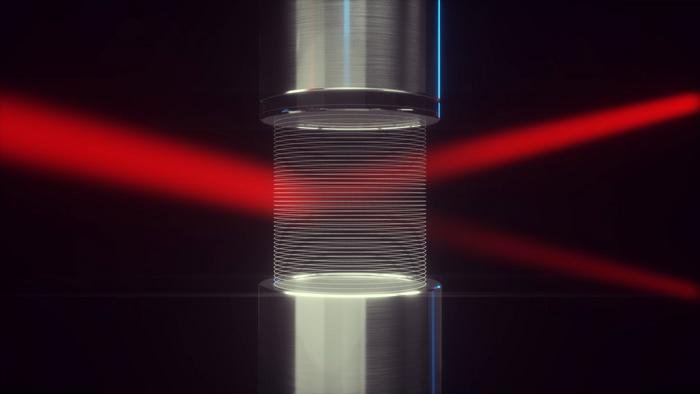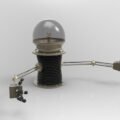A team of scientists reports that they have successfully deflected laser beams off of nothing but air while still maintaining the beam’s strength and integrity in an engineering first. The unprecedented feat is rife with potential applications for improving or developing new high-tech devices that the team involved has applied for a patent on their process of using air to deflect laser beams.
The key behind the seemingly impossible accomplishment is the use of sound waves. That’s because the international research team used acoustic waves to modulate the air in the path of the laser beams, creating an invisible grating made only of air that can reflect the beam like a mirror.
“We’ve generated an optical grating with the help of acoustic density waves,” explained Yannick Schrödel, a Ph.D. student at DESY and Helmholtz Institute Jena and the first author of the paper outlining their work.
Specialized loudspeakers provided the acoustic waves, which the researchers used to create a specific pattern of dense and less dense areas in mid-air, resulting in what they describe as a “striped grating.” The researchers note that it is remarkably similar to the effect the various layers of the Earth’s atmosphere have on light, specifically the bending of light. However, they note there is one key difference.
“Deflecting light by diffraction grating allows much more precise control of the laser light compared to deflection in the Earth’s atmosphere,” says Schrödel. “The properties of the optical grating are influenced by the frequency and intensity – in other words, the volume – of the sound waves.”
Lab Tests Prove the Efficacy and Quality of Using Sound Waves to Deflect Laser Beams
When the team actually first tested the process in a laboratory setting, they were able to deflect a strong infrared laser pulse with an efficiency of over 50%. This involved turning the sound on their speakers “way up” to create the needed air grating effect.
“We are moving at a sound level of about 140 decibels, which corresponds to a jet engine a few metres away,” explains scientist Christoph Heyl from DESY (Deutsches Elektronen-Synchrotron) and the Helmholtz Institute Jena, who is leading the research project. Fortunately, Heyl added, they were operating their speakers in the ultrasound range, “which our ears don’t pick up.”
Notably, the laser used was also incredibly powerful, with a peak power of 20 gigawatts. For comparison, infrared laser beams of that intensity give off as much light energy as two billion LEDs. This is rather significant, as lasers operating in extreme power ranges (for instance, those used to initiate a fusion ignition) don’t always cooperate with traditional methods of redirecting them.
“In this power range, the material properties of mirrors, lenses, and prisms significantly limit their use, and such optical elements are easily damaged by strong laser beams in practice,” explained Heyl. “In addition, the quality of the laser beam suffers.” In contrast, Heyl notes that they were able to deflect laser beams “in a quality-preserving way without contact.”
Promising Applications of Redirecting Lasers Using Only Waves of Sound
Moving forward, the researchers say they are applying for a patent on their process. While they await approval, they say they are looking at ways to improve their sound grating techniques even further, potentially expanding its use to a whole new range of engineering possibilities.
“First, we tried out our technique with ordinary air,” said Heyl. “Next, for example, we will also use other gases in order to tap into other wavelengths and other optical properties and geometries.”
Still, they say that the most obvious and possibly most beneficial application of bending laser beams with nothing but sound waves is in high-energy laser applications like fusion research, material processing, or even particle accelerators where the ability to change the direction of lasers without actually coming in contact with them could prove to be a game-changer.
“The potential of contactless control of light and its extension to other applications can currently only be imagined,” explains Heyl. “Modern optics is based almost exclusively on the interaction of light with solid matter. Our approach opens up a completely new direction.”
Christopher Plain is a Science Fiction and Fantasy novelist and Head Science Writer at The Debrief. Follow and connect with him on X, learn about his books at plainfiction.com, or email him directly at christopher@thedebrief.org.

